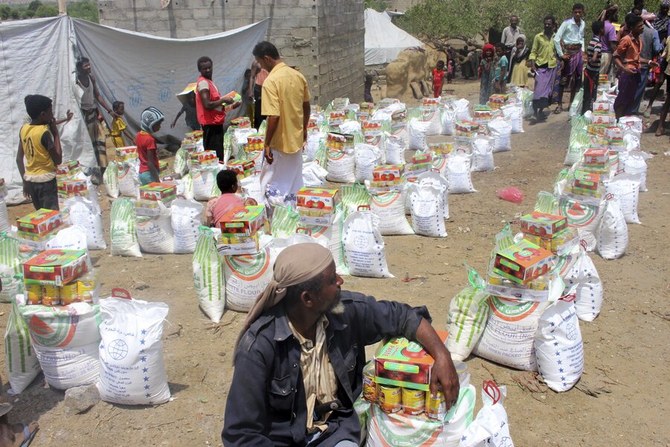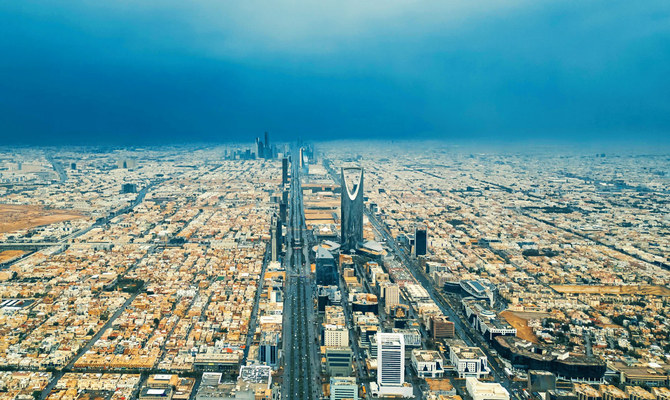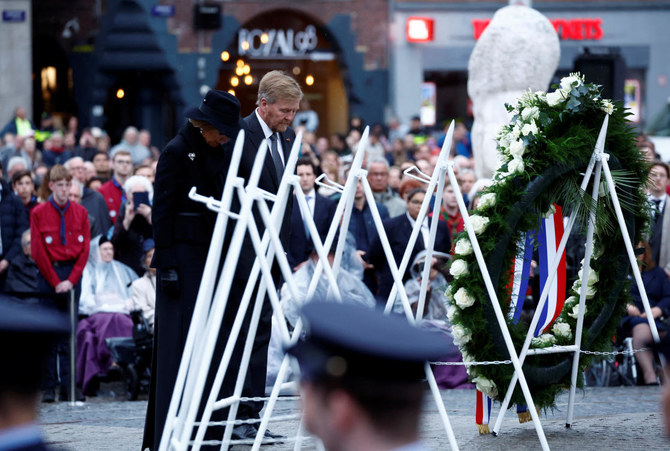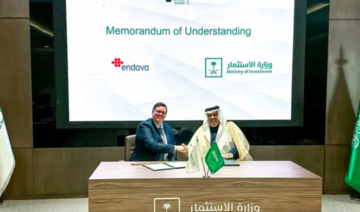LONDON: The US envoy to Yemen, Tim Lenderking, announced nearly $165 million in new humanitarian assistance for Yemen, the State Department said on Monday.
The funding, issued from the US Agency for International Development (USAID), “will provide lifesaving aid for Yemenis continuing to face humanitarian crisis after almost seven years of war that has left 20 million people struggling to survive without basic necessities, including more than two million young children facing deadly malnutrition,” the statement said.
The aid will go toward helping the UN World Food Program to continue providing emergency food assistance to more than 11 million people every month, including in communities affected by the COVID-19 pandemic, in an effort to prevent.
The USAID called on other donors to step up their contributions to help deliver critical assistance to the Yemeni people, but said the US reiterates that only a political agreement can address the root causes of the crisis in the war-torn country.
“The United States calls on all parties to the conflict to end the fighting and ensure needs do not continue to worsen,” USAID said, adding that aid alone cannot meet the vast and growing humanitarian needs in Yemen.
“Aid from the international community has so far prevented people from slipping into famine, the recent escalation of violence in Marib is only increasing humanitarian needs as it threatens to displace hundreds of thousands of people, placing further strain on an already stretched humanitarian response,” it said.
The Iran-backed Houthi militia mounted a brutal offensive to take control of oil and gas-rich Marib in February, sparking widespread international condemnation, particularly since the governorate has served as a safe haven for internally displaced people who have been fleeing the fighting since the conflict began in 2014.
The US remains the largest single donor of humanitarian assistance in Yemen, providing more than $3.6 billion to alleviate suffering of the Yemeni people since the crisis began.
US announces $165 million in new humanitarian assistance for Yemen
https://arab.news/57hu8
US announces $165 million in new humanitarian assistance for Yemen

- USAID calls on other donors to step up their contributions to help the Yemeni people
- US says recent escalation of violence in Marib is only increasing humanitarian needs
Saudi Arabia’s on the frontline of battle against climate change

- Middle Eastern countries face unique challenges that compound the urgency of tackling this environmental crisis
RIYADH: As temperatures continue to rise worldwide, the Arab region is on the frontline of the battle against climate change.
In the global race to achieve net-zero, the Middle Eastern countries face unique challenges that compound the urgency of tackling this environmental crisis to safeguard their future.
The Gulf region is one of the areas most heavily impacted by climate change, primarily due to the already elevated temperatures that have exceeded the global average.
In recent years, the Arab world has heightened its focus on the ramifications of global warming, particularly its economic impacts, to avert the detrimental consequences.
Events such as MENA Climate Week in Riyadh in 2023, the UAE’s COP28 in 2023, and Egypt’s COP27 in 2022 underscore the region’s commitment to addressing this pressing issue.
Speaking to Arab News, Sal Jafar, CEO of ESG MENA, underscored these efforts, stating: “I have observed firsthand the transformative strides the GCC countries are making in the realm of energy transition and climate change efforts.”
He added: “This region, historically reliant on hydrocarbon economies, is now at the forefront of a pivotal shift toward sustainability and environmental stewardship, underpinned by an ESG framework.”
The intricate relationship between atmospheric changes and financial growth in these nations underscores the necessity of adopting sustainable development practices.
A recent report by the Arab Monetary Fund states that by the year 2050, the region may experience a significant reduction in water availability and agricultural productivity.
This decline, which is connected to climate-related water scarcity, could result in economic losses equivalent to 14 percent of the area’s gross domestic product.
Saudi Arabia, a pivotal player in the Middle East and a significant oil producer, embodies the region’s complexities and potential for transformation.
The Kingdom has been keen to amplify its efforts in energy transition for at least a decade, Yousef Al-Shammari, the CEO of CMarkits, a UK-based energy research consultancy firm, told Arab News.
These measures began with the launch of the King Abdullah City for Atomic and Renewable Energy in 2013, he noted, saying: “At that time, the aim was to minimize crude oil consumption by utilizing alternative sources of energy. Especially because the local consumption of crude is projected to keep rising because of national consumption of electricity and, of course, road transport demand.”

This region, historically reliant on hydrocarbon economies, is now at the forefront of a pivotal shift toward sustainability and environmental stewardship, underpinned by an ESG framework.
Sal Jafar, CEO of ESG MENA
Crude oil demand is projected to rise to as high as 8 million barrels per day, while the Kingdom produces 10 million barrels. This will inevitably lead to an “economic security risk” and result in the nation’s first motive of ensuring energy efficiency, Al-Shammari said.
However, with rising concerns about escalating temperatures and environmental sustainability, the nation launched its Vision 2030 in 2016 to position itself as a global leader in clean energy production and divert its economy from oil dependency.
The road to net-zero
The Kingdom has embarked on various initiatives to reduce its carbon footprint and diversify its economy beyond oil.
Mitigative efforts include ambitious targets of 44 million tonnes of carbon dioxide captured annually by 2035 and 2 million tonnes of CO2 seized and utilized daily to produce glycol, urea and green methanol, as well as clean fuels, according to the 14th IEA-IEF-OPEC Symposium on Energy Outlooks.
This is being made possible through the circular carbon initiative, which was introduced during the Kingdom’s presidency of the G20, the CEO highlighted, saying: “The circular carbon initiative that includes removal reduce, reuse, and recycle,” he explained, adding: “Saudi Aramco is pursuing a very ambitious program on that line. I think there is one major project, which is starting in 2027, which will be the world’s largest CO2 capture project.”
The facility, which Aramco is said to play a significant role in, seeks to capture 9 million tonnes per annum of CO2 by 2027, with the aim of increasing its capacity to 44 million tonnes per annum by 2035, Al-Shammari outlined.
In October of 2022, the Kingdom’s sovereign wealth fund launched its regional Voluntary Carbon Market company during the sixth edition of the Future Investment Initiative in Riyadh.
This move allowed for tradable CO2 shares to be launched on an exchange, with major players in the Saudi energy field, like Aramco and SABIC, taking part.
The idea of the VCM is to allow companies to pay to compensate for their CO2 emissions. Additionally, the market’s voluntary nature presents a greater chance for success than compulsory sectors implemented in other regions, Al-Shammari outlined.
He said: “It’s voluntary, which means it can have a bigger impact than compulsory carbon markets, which we have seen in Europe, which did not really lead to any carbon reductions. The idea is, by being voluntary, it essentially enables companies to make economic sense of it. So when you have an economic return by having these investments in carbon markets, that would pay off the cost of capturing carbon. So somehow, it encourages producers to minimize their carbon emissions.” He added: “There is so much research and literature that has been done on that and the optimism about the
voluntary market is so huge and encouraging producers to minimize emissions compared to the compulsory markets.”
Greening the world
Equipped with a strategic location at the crossroad of three continents, the Kingdom is well positioned to lead in renewable energy exports globally.
Two ambitious projects outlined in the Symposium on Energy Outlooks include exporting 150,000 tonnes of clean ammonia globally and building the world’s largest green hydrogen project in NEOM.
Therefore, the nation’s location essentially allows it to export its potentially massive renewables supply east or west, Al-Shammari highlighted.
As European countries look to produce and import green hydrogen, Saudi Arabia will remain the continent’s supplier “for the foreseeable future,” he outlined.
He said: “As a part of the decarbonization plans, if you want to produce green hydrogen in Germany, it’s going to cost you $5 a kilogram and you’re going to produce it in Saudi Arabia, it’s going to cost you between $1 and $2 a kg.”
He added: “In the meantime, for the foreseeable future, Germany, which is Europe’s largest economy, will be dependent on and will need to import green hydrogen from cheap places like Saudi Arabia.”
Similarly, Saudi energy giant ACWA Power currently holds the world’s most extensive green hydrogen storage unit, with 1.2 million tonnes of ammonia produced per annum.
The company can “easily” import and export this large sum from its site in the northwest region of the Kingdom to Europe.
These efforts are allowing the country to shift its global image from a crude oil exporter to a major player in all energy fields.
Why the Oslo Accords failed to put Palestinians on the path to statehood

- A memento being offered for sale was apparently torn from White House program for the Sept. 13, 1993, signing ceremony
- Timing of sale amid Gaza war ironic in that the document is reminder of a conflict that has raged unresolved since 1948
LONDON: Monday, Sept. 13, 1993, was a sunny day in Washington and, for those gathered on the lawn of the White House, it seemed that a bright new era had dawned in the fraught relationship between Israel and the Palestinians.
The occasion was the formal signing of the Oslo Accords, a declaration of principles on interim Palestinian self-government that had been agreed in the Norwegian capital the previous month by Israeli and Palestinian negotiators.
It was a historic moment, and it produced a remarkable photograph that claimed its rightful place on the front pages of newspapers around the world: Israeli Prime Minister Yitzak Rabin and PLO Chairman Yasser Arafat smiling and shaking hands in front of a beaming US President Bill Clinton.

With ironic timing, given the current tragedy unfolding in Gaza 30 years later, a unique memento of that day is being offered for sale by the Raab Collection, a US company that specializes in the buying and selling of important historical documents and autographs.
The single piece of paper, embossed with the golden seal of the President of the United States, and apparently torn from the White House program for the signing ceremony, is signed by all the key players on that hopeful day.

According to Raab, which declines to reveal who put the document up for sale, it was “acquired from the archives of one of the important participants at the event.”
Each of the seven signatures has great value for any student of politics and history — here are the hands of Arafat, Rabin, Palestinian President Mahmoud Abbas, Israeli President Shimon Peres, US Secretary of State Warren Christopher, and Russian Foreign Minister Andrei Kozyrev, whose country had co-sponsored the 1991 Madrid Conference that set the stage for the Oslo Accords.
Taken together, they offer a bittersweet reminder of a moment when, in the words that day of an ebullient Clinton, “we dare to pledge what for so long seemed difficult even to imagine: That the security of the Israeli people will be reconciled with the hopes of the Palestinian people and there will be more security and more hope for all.”

Rather like a rare stamp, the value of which is increased by a printing anomaly, the document includes a curious discrepancy. It was signed on Sept. 13, the day of the White House ceremony, but only two of the signatories added the date to their signature. While Abbas wrote the correct date, the 13th, Arafat dated his signature the 14th.
The document is offered for sale at $35,000, but in political terms, with the hope expressed that day by Clinton that it was the gateway to “a continuing process in which the parties transform the very way they see and understand each other,” it is worthless.
INNUMBERS
• 10 Israeli prime ministers since the signing of the Oslo Accords in 1993.
• 4 Palestinian prime ministers since creation of the post in 2013.
As a reminder of the seemingly intractable nature of a conflict that has raged unresolved since 1948, the 30-year-old document is priceless.
One of the witnesses on the White House lawn that September day in 1993 was philosopher Jerome M. Segal, a peace activist who in the spring of 1987 had been part of the first American-Jewish delegation to meet with the PLO leadership.

The following year Segal played a key role in negotiations that led to the opening of a dialogue between the US and the PLO, and a series of essays he published is credited with having informed the PLO’s decision to issue a Declaration of Independence and launch a unilateral peace initiative in 1988.
In 1993, as he watched Arafat and Rabin shaking hands, Segal, the founder of the Jewish Peace Lobby, had good reason to think that the elusive prize of peace might actually be within grasp.
Four days before the signing, Arafat and Rabin had exchanged letters, the former renouncing violence and acknowledging Israel’s right to exist in peace and security, and the latter recognizing the PLO as the representative of the Palestinian people and committing to peace negotiations.
It was agreed that a new Palestinian National Authority would be formed, and would assume governing responsibilities in the West Bank and Gaza Strip.
After five years, “permanent status” talks would be held to forge agreement on key issues to pave the way for the creation of a future Palestinian state, including borders, the right of return of Palestinian refugees, and the status of Jerusalem.
But Segal, and everyone else imbued with optimism on that bright September day, was to be disappointed.
Many reasons have been proposed for the withering of the olive branch of Oslo, but according to Israeli-British historian Avi Shlaim, writing in 2005, “the fundamental cause behind the loss of trust and the loss of momentum was the Israeli policy of expanding settlements on the West Bank, which carried on under Labour as well as Likud.”
This policy — which continues to blight relations between Israel and the Palestinians to this day — “precluded the emergence of a viable Palestinian state, without which there can be no end to the conflict.”
In a terrible pre-echo of the provocative visits to the Al-Aqsa mosque compound carried out recently by some of the right-wing members of Benjamin Netanyahu’s cabinet, Ariel Sharon, while campaigning to become Israel’s prime minister in September 2000, made a similarly controversial visit to the site.

The result was an outbreak of violent protests by outraged Palestinians. The Second Intifada would last almost five years and claim thousands of lives.
For Segal, director of the International Peace Consultancy, the failure of Oslo owes less to the supposed intransigence of the PLO over the years than to the internal dynamics of Israeli politics.
“The thing to realize about Oslo is that since 1993, the Palestinians have had only two leaders, Arafat and Abu Mazen (Mahmoud Abbas, the second and current president of Palestine),” he told Arab News.
“Their positions on final status were almost identical, so there has been a consistency on the Palestinian side of a willingness to end the conflict and recognize the State of Israel — even through the Second Intifada, that never changed, and it’s still there today.
“But on the Israeli side, we’ve had enormous flip-flops, from Rabin, to Peres, to Netanyahu, to Ehud Barak, to Ariel Sharon, to Ehud Olmert, and back again to Netanyahu.”
The precarious nature of peace talks for Israeli politicians was underlined in November 1995 when, just two years after shaking Arafat’s hand, Rabin was assassinated by a right-wing Israeli extremist opposed to the Oslo Accords.
“After Rabin’s death we have only had two Israeli prime ministers, Barak and Olmert, who have gone into serious final-status negotiations with the Palestinians,” said Segal.
Barak, who beat Netanyahu in the polls by a wide margin to become prime minister in 1999, “did it in a terrible context — the Second Intifada had already started.”
In 2000, Barak took part with Arafat in the Camp David Summit, which ended without agreement. As the violence continued in 2001, Barak stood for reelection as prime minister, losing to Ariel Sharon, one of the founders of Israel’s right-wing Likud party.

In 2006, Sharon was succeeded by Ehud Olmert, leader of the more liberal Kadima party. By 2009 he too would be gone, enmeshed in a series of corruption allegations and succeeded by Netanyahu.
“So, in the entire period since 1993, we’ve actually had only two Israeli prime ministers, and for a combined total of not more than three years, under whom there was a serious effort to pursue the final negotiations envisioned by Oslo,” Segal said.
That, he added, “leads to a very interesting question: Why, with the promise of ending the conflict, does the Israeli public regularly elect prime ministers who aren’t interested, like Netanyahu — why, as I heard Avi Gill (a former director-general of Israel’s Ministry of Foreign Affairs) put it, do Israelis poll left, but vote right?”
The answer, Segal believes, “is because they don’t believe they are losing anything by doing so.”
Ironically, given the unwillingness of every Israeli leader since Olmert to compromise in the interest of peace, “even though they would support the two-state solution, they don’t believe there’s a Palestinian partner who will. In their mind they’re not losing a conflict-ending agreement they might get if they had a left-wing leader, so they end up going for Mr. Security.”
This, believes Segal, is a crucial factor in the ongoing failure to find the peace that seemed so close in 1993.
“You have to deal with this, what I call ‘no-partnerism,’ the dogma that there is not, and has never been, a Palestinian partner for peace, because this is not just a Netanyahu thesis. It’s one that’s deep in the belief structure of the majority of Israelis.
On Oct. 6, the eve of the Hamas-led attack on Israel, Segal was optimistic that a breakthrough was close.
In his book “The Olive Branch from Palestine,” published in 2022, he had urged “a Palestinian return to unilateral peacemaking, with the Palestinians taking the lead in establishing ... a UN commission through which the Palestinians would advance, in full detail, without any ambiguity, the end-of-conflict, end-of-claims agreement that they are prepared to sign.”
This he dubbed UNSCOP-2, an allusion to the UN committee formed in 1947, which proposed the original partition plan for Palestine.
“On Oct. 6, I believed that we could get major changes through the UNSCOP-2 process. I believed that a committee could be created in a matter of months, that all I had to do was to get Abu Mazen across the line, to get him to go from calling on the secretary general of the UN to do something to doing something himself in the General Assembly, and we could move very rapidly.
“We talked to many countries at the UN. We even talked to Iran, and nobody was opposed. I believed that we could then put in front of the Israeli public something that in decades of conflict they have never had, which is a Palestinian ‘Yes’.”
By training a philosopher, Segal remains philosophical, despite the disastrous events of the past seven months.
“On Oct. 6, I was optimistic for the short term. Now I see the timeframe is very different, but I do have proposals. Our approach after Oct. 7 is what you could call ‘Gaza-first’.”
This is the reawakening of a plan first proposed by Segal in 1995 at the request of Israeli Prime Minister Peres — the idea that while granting Palestinians sovereignty over the West Bank might be an initial step too far for most Israelis, an experiment in Palestinian statehood limited at first to Gaza might win their confidence and, ultimately, lead to an Arab state that includes the West Bank.
In 1995, it was Arafat who rejected the plan, fearing not unreasonably that “Gaza first” would come to be “Gaza last,” with the PLO confined to the coastal strip in perpetuity, even though “I presented a 20-point proposal designed to give the PLO confidence that they wouldn’t get stuck in Gaza.”
The reason, Segal believes, is because Oslo was still alive, and it made sense for the PLO to hold out for what would prove to be the illusory promise of final-status talks.
Now his view is that “Gaza first” offers the only realistic hope of progress.
As he wrote in a column for Foreign Policy on Feb. 6, in the wake of Oct. 7 “no Israeli government will ever agree to a Palestinian state in the West Bank unless there is substantial confidence that it will not be a threat to Israel.”
If there is an answer, Segal concluded, “it will require abandoning the defunct Oslo paradigm, which sees Palestinian statehood emerging as a result of successful end-of-conflict negotiations.
“The alternative is a sovereignty-in-Gaza-first approach, to test Palestinian statehood in Gaza first and, only if it is successful over an agreed period, to then move to negotiations on extending Palestinian sovereignty to the West Bank.”
Right now, Segal’s dogged commitment to the peace process is as admirable as it is remarkable.
But, in the face of a general lack of alternative proposals, it perhaps also offers the best hope of achieving Clinton’s wish, expressed on the White House lawn over 30 years ago, that “two peoples who have both known the bitterness of exile” might “put old sorrows and antagonisms behind them ... to work for a shared future shaped by the values of the Torah, the Qur’an, and the Bible.”

Faf du Plessis, Virat Kohli help Bengaluru stay in IPL play-off race

BENGALURU: Skipper Faf du Plessis and Virat Kohli helped Royal Challengers Bengaluru hammer Gujarat Titans by four wickets for their third successive IPL win on Saturday.
Chasing a modest 148 for victory, Du Plessis, who hit 64, and Kohli, who made 42, laid the foundations with a stand of 92 in 35 balls as the target was achieved with 6.2 overs to spare at Bengaluru’s M. Chinnaswamy Stadium.
Du Plessis’ departure triggered a collapse as Gujarat hit back with wickets from Joshua Little and Noor Ahmad to have the opposition in trouble at 117-6 when Kohli was dismissed.
Wicketkeeper-batsman Dinesh Karthik, who hit 21, and Swapnil Singh, who made 15, made sure there was no more drama as they steered the team home in an unbeaten stand of 35.
“It was important we didn’t look at the scoreboard when we went out to bat and try and play the way we play,” said Du Plessis.
“It was a bit nerve-wracking, another wicket, another wicket. Probably not the best but you’re trying to be positive, get your net run-rate up.”
Bowlers set up victory after pace spearhead Mohammed Siraj removed the openers including skipper Shubman Gill early and Gujarat lost regular wickets to be bowled out for 147 in 19.3 overs.
Siraj returned figures of 2-29 to be named man of the match but the pace bowler said he nearly missed the game after being “sick since last night.”
It was Bengaluru’s fourth win and third on the bounce in 11 matches as they jumped from the bottom of the table to seventh and keep their slim play-off hopes alive.
Gujarat’s hopes are also hanging by a thread as they slumped to their seventh loss in 11 matches.
“Very important to start from zero in our next match and move on from this game,” Gill said. “Learn from mistakes and not repeat them. All about winning from here on.”
Kohli, who reclaimed the top batting spot with 542 runs, came out roaring as he hit Mohit Sharma for two sixes in the opening over of the chase and Du Plessis soon joined in and moved ahead to raise his fifty in 18 balls.
The South African veteran smashed 10 fours and three sixes in his 23-ball blitz before being dismissed by Ireland left-arm quick Little.
Little took two more wickets including Glenn Maxwell for four as Bengaluru slipped to 107-4.
Little sent back Cameron Green and then Noor’s left-arm wrist spin silenced the home crowd when he had Kohli caught behind, but the hosts had the last laugh when Singh hit the winning six.
Earlier put into bat, Gujarat went three down for 19 inside six over before big-hitter Shahrukh Khan, who top-scored with 37, stood strong in a 61-run stand with David Miller, who hit 30 off 20 balls.
Left-handed Rahul Tewatia hit a 21-ball 35 and put on another key stand with Rashid Khan to add respect to the total.
Ukraine keen to cooperate with KSA in digitalization push: vice minister

- European nation’s growing prowess in technology could help Saudi Arabia in its digital transformation journey
RIYADH: Saudi Arabia’s technological landscape is set to get a boost as Ukraine has expressed its eagerness to cooperate with the Kingdom in multiple sectors including agri-tech, fintech, and cybersecurity.
Speaking to Arab News during his visit to the Saudi capital, Oleksandr Bornyakov, Ukraine’s vice minister of digital transformation, said the European nation’s growing prowess in technology could help Saudi Arabia in its digital transformation journey.
During his visit to the Kingdom, the vice minister held meetings with the officials of the Kingdom’s information and investment ministries and the General Authority of Small and Medium Enterprises also known as Monsha’at.
“My visit is kind of like exploring — breaking the ice. Since we are the policymaking body in Ukraine, we know everybody in Ukraine from the tech sector. We want to hear from the local government
about what kind of problems they face, and what kind of things they need, and then, decide what’s the best fit for fulfilling those. I think there’s an interest in bringing this expertise to Saudi Arabia,” said the vice minister.
He added: “From an educational perspective we build a framework of how we teach people from school to university. So they become very talented engineers. We have expertise in almost every sector like healthcare, automotive, energy, and finance. And when countries like Saudi Arabia, trying to digitize any of these fields, I think we could be helpful.”
He said that his visit to Riyadh seeks to establish a relationship on the government level, which will in turn help them to cooperate with private sector entities including startups in the future.
During his visit to the Kingdom, the Ukrainian vice minister also presented several digital products to Saudi officials that can be used on the government-to-government level.

The world is changing fast, and I can’t imagine my life without many digital things that I have become used to. So I think any country that wants to follow up on this and, be on the edge of the technology has to change and invest a lot in this.
Oleksandr Bornyakov, Ukraine’s vice minister of digital transformation
He said that Saudi Arabia is quickly developing, and there is enormous potential for technological firms in the Kingdom.
Bornyakov added that Saudi Arabia should build an entrepreneurship culture in the Kingdom so that local talents in the country can leapfrog in the technological sector with innovations and products.
“The world is changing fast, and I can’t imagine my life without many digital things that I have become used to. So I think any country that wants to follow up on this and, be on the edge of the technology has to change and invest a lot in this. Because, in the West, many great things happen. Even Google, it came from students,” the official said.
He added: “I think, Gulf countries and Saudi Arabia in particular also want to have this, this entrepreneurship culture. And, we know how to teach people how to do that, and, be part of this. I think that’s why we have this mutual interest. And I feel that Saudi Arabia is open to that experience.” Bornyakov further noted that Saudi Arabia’s business-friendly environment for foreign investments is one of the main reasons behind his current tour of the Kingdom.

“Here, there is an investment environment. You can easily come to create a business in one or two days, then open a bank account, and then you are good to go. So this is one of the reasons that we decided to do this tour and, figure out who’s doing what,” he added.
The vice minister also lauded Saudi Arabia’s efforts to diversify its economy away from oil aligned with the goals outlined in Vision 2030.
“I think diversifying is a good idea. It’s actually what’s happening in Ukraine. When I started in 2019, the contribution of the IT sector to the gross domestic product was 2.5-2.6 percent, and now it is close to 5 percent. As of today, 41 percent of all Ukrainian export services are IT.
“I think it is also something interesting here. The energy sector might be strong, for how many years, we do not know,” he said.
According to Bornyakov, Ukraine is also steadily reducing its dependence on grains and heavy machinery, and technological products from the IT sector are becoming major contributors to the nation’s economy.
“Historically, Ukraine was what? Grain and heavy machinery. Unfortunately, due to war, we lost a lot of factories and heavy machinery. And because we thought about IT, even though, less than a decade ago, but still, the sector was evolving very fast. We now have a source of export revenue, which is almost $8 billion every year, and just maybe five years ago, it was $3 billion or $4 billion,” he added.
HIGHLIGHT
Oleksandr Bornyakov’s visit to Riyadh seeks to establish a relationship on the government level, which will in turn help them to cooperate with private sector entities including startups in the future.
Bornyakov also talked about the success of Ukraine’s Diaa application which allows Ukrainians to use digital documents on their smartphones instead of physical ones for identification and sharing purposes, along with accessing over 130 government services.
According to the vice minister, there are 20 million active Diaa users in Ukraine, and he claimed that no other government app in the world can boast about such a huge user database. He also added that such applications have huge potential in the Gulf Cooperation Council region, which will reduce the hassles of paper passports and other government documents, as it allows people to carry everything on a smartphone.
“We want to implement the vision of President Zelensky to build a country in smartphone. Then we created a government super app called Diaa. We started by putting all the papers of a citizen like driver’s license, car titles, insurance, diplomas, birth certificates, tax IDs, and passport, everything on the phone, so you don’t carry paper. So, we were the first country in the world to introduce digital passports,” said Bornyakov.
He added: “There is a huge demand for such apps since Gulf countries have a union, GCC. And if you travel, and if you want to identify yourself, you will have to use different passports and different procedures. We have a solution to solve all of these problems.”
According to the vice minister, Ukraine has opened a source code for these applications, which makes countries use these codes to develop applications as per their requirements.
“Recently, we have opened source code, so you don’t have to pay us. So you can take this and we can showcase and you can use the source code to build, something that you own as this union (GCC), and use it for the sake of its people. And that is one of the things we are happy to share with the world,” he added.
Netherlands remembers World War Two dead amid tight security due to Gaza war

- Normally some 20,000 people attend the Dam commemoration
- Earlier this week municipal authorities announced unprecedented security measures to keep the ceremony safe and avoid possible disruptions linked to the Israel-Hamas war
AMSTERDAM: Dutch King Willem-Alexander and Prime Minister Mark Rutte joined around 4,000 people on Saturday for the country’s annual World War Two remembrance ceremony amid restricted public access and heightened security due to the war in Gaza.
The ceremony on Amsterdam’s central Dam square, with the traditional two minutes of silence at 8 p.m. (1800 GMT) to commemorate the victims of World War Two, passed smoothly despite fears that there might be protests.
Normally some 20,000 people attend the Dam commemoration without having to register. But earlier this week municipal authorities announced unprecedented security measures to keep the ceremony safe and avoid possible disruptions linked to the Israel-Hamas war.
At the opening of a Holocaust Museum in Amsterdam in March, pro-Palestinian protesters opposed to Israel’s military campaign in Gaza set off fireworks and booed Israeli President Isaac Herzog as he arrived on a visit.
Every town and the city in the Netherlands holds its own remembrance ceremony on May 4 and tens of thousands of people attend the events. The Netherlands then marks on May 5 the anniversary of its liberation from Nazi occupation in 1945.



















